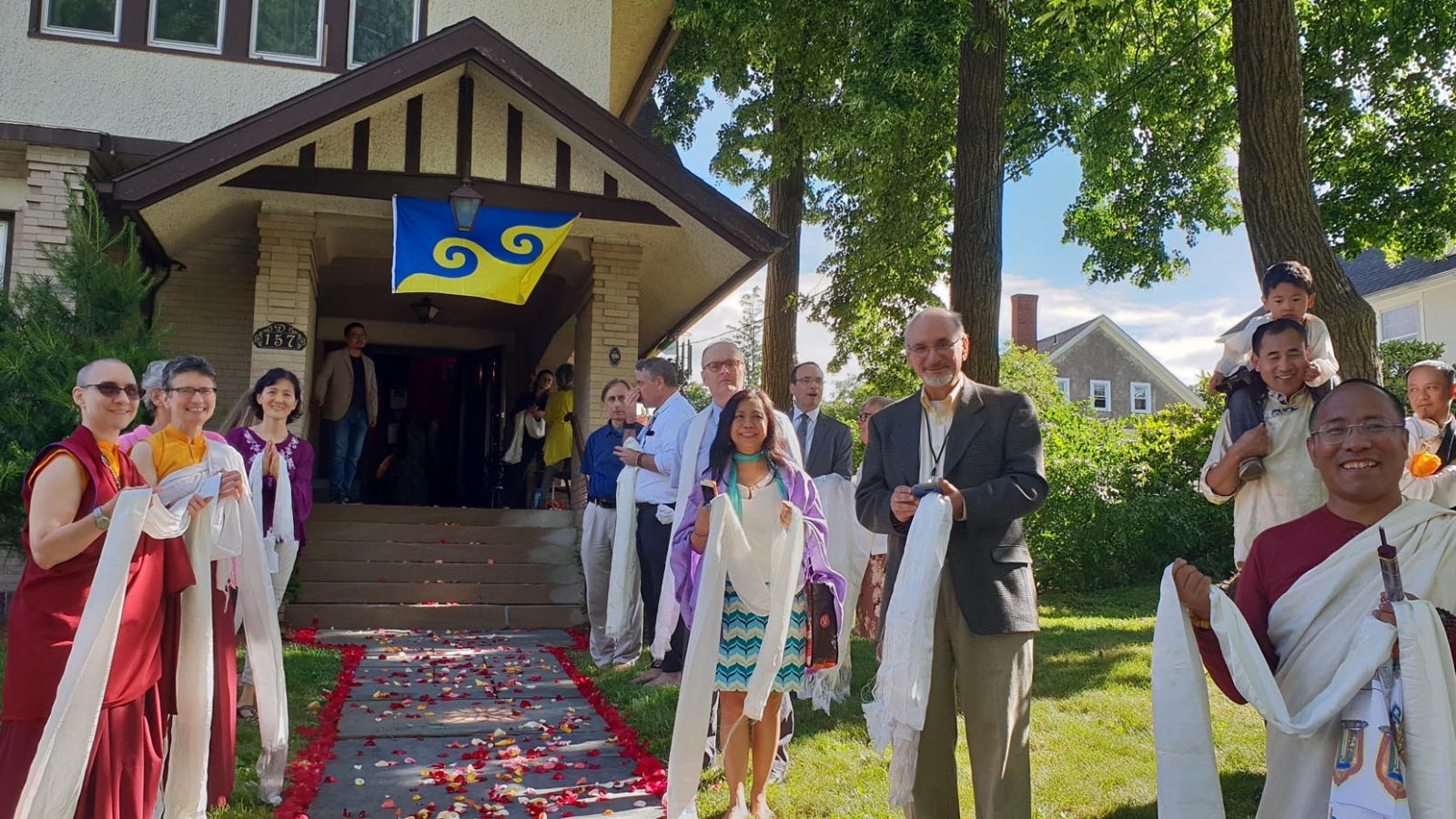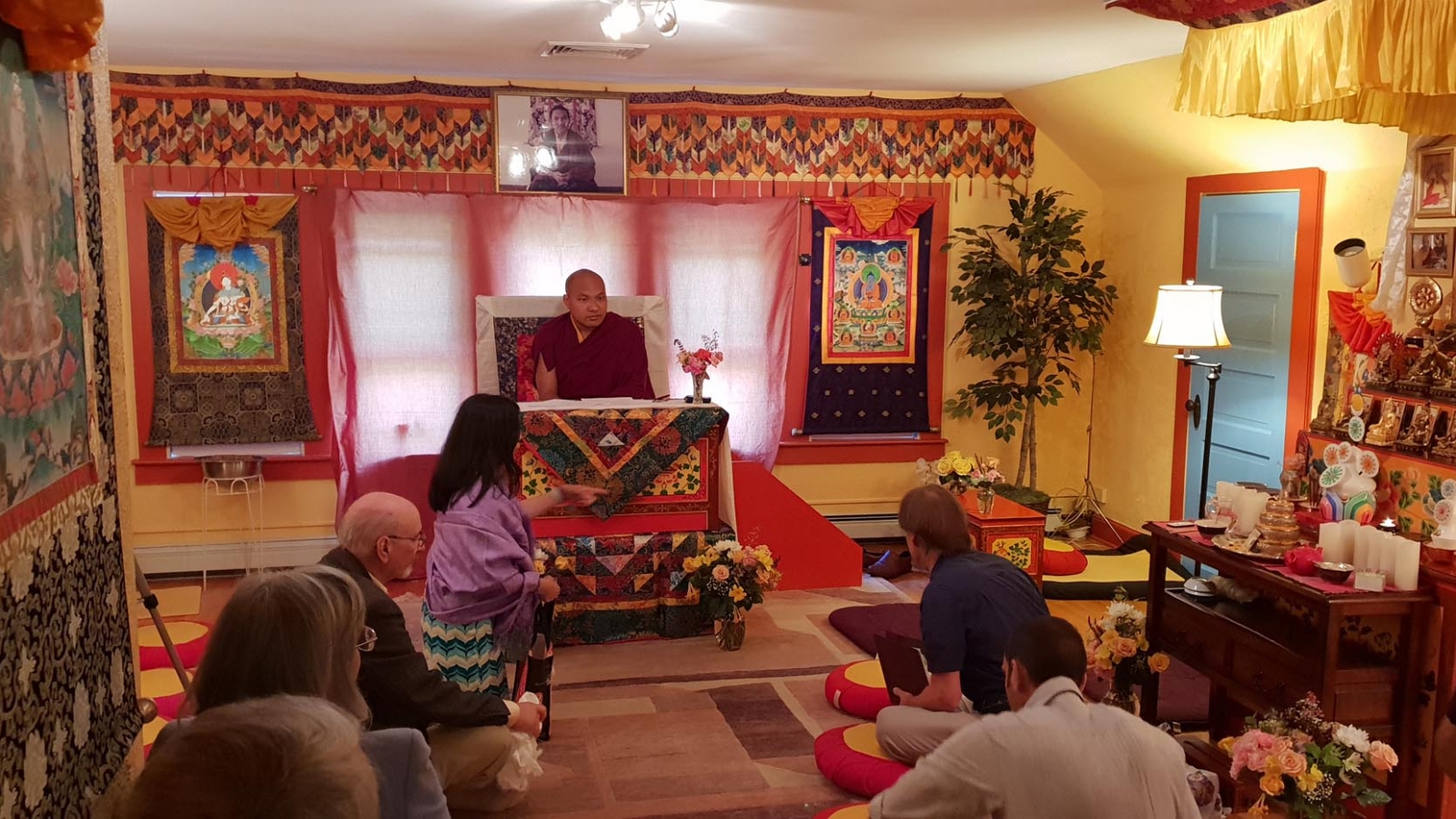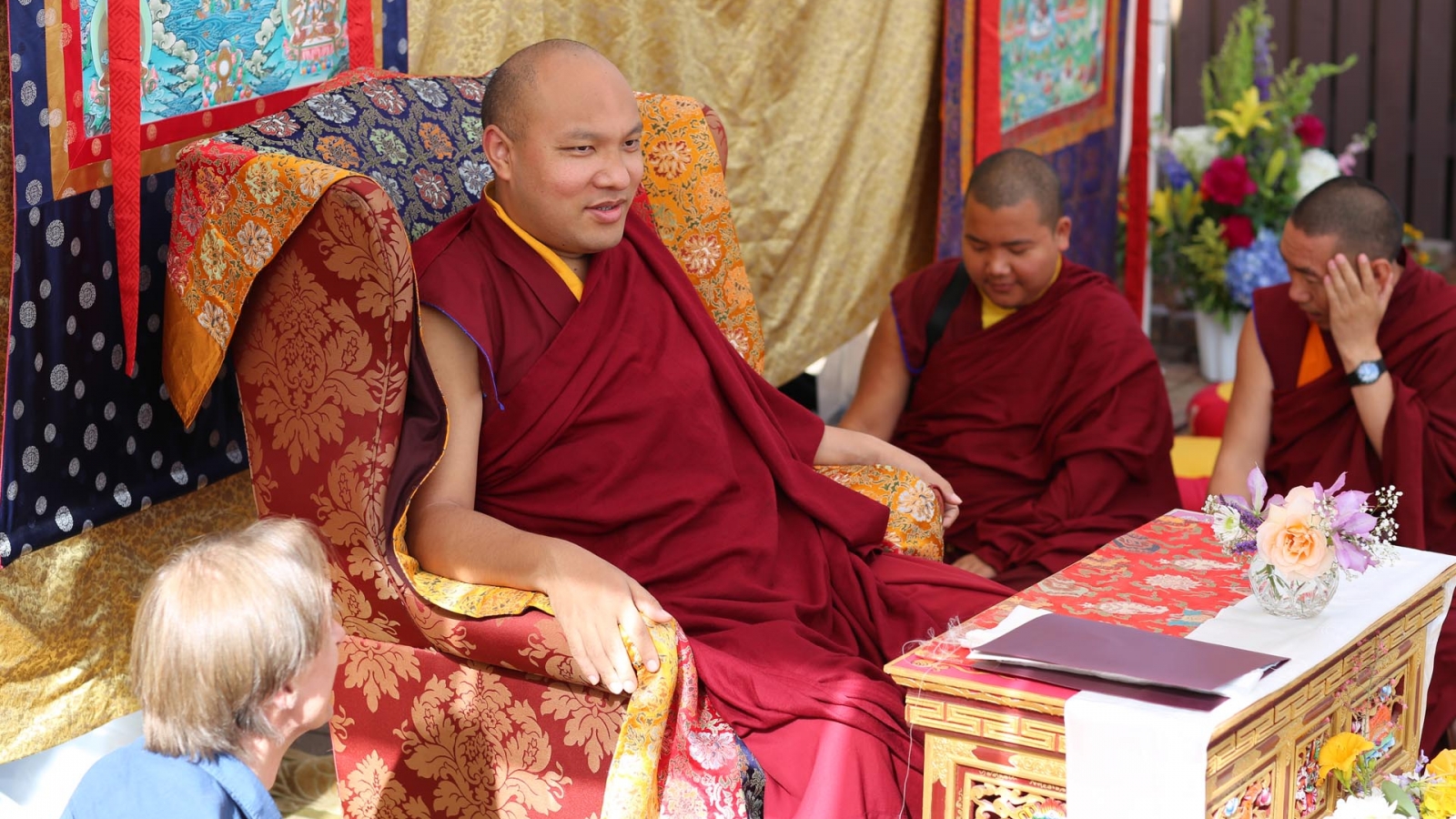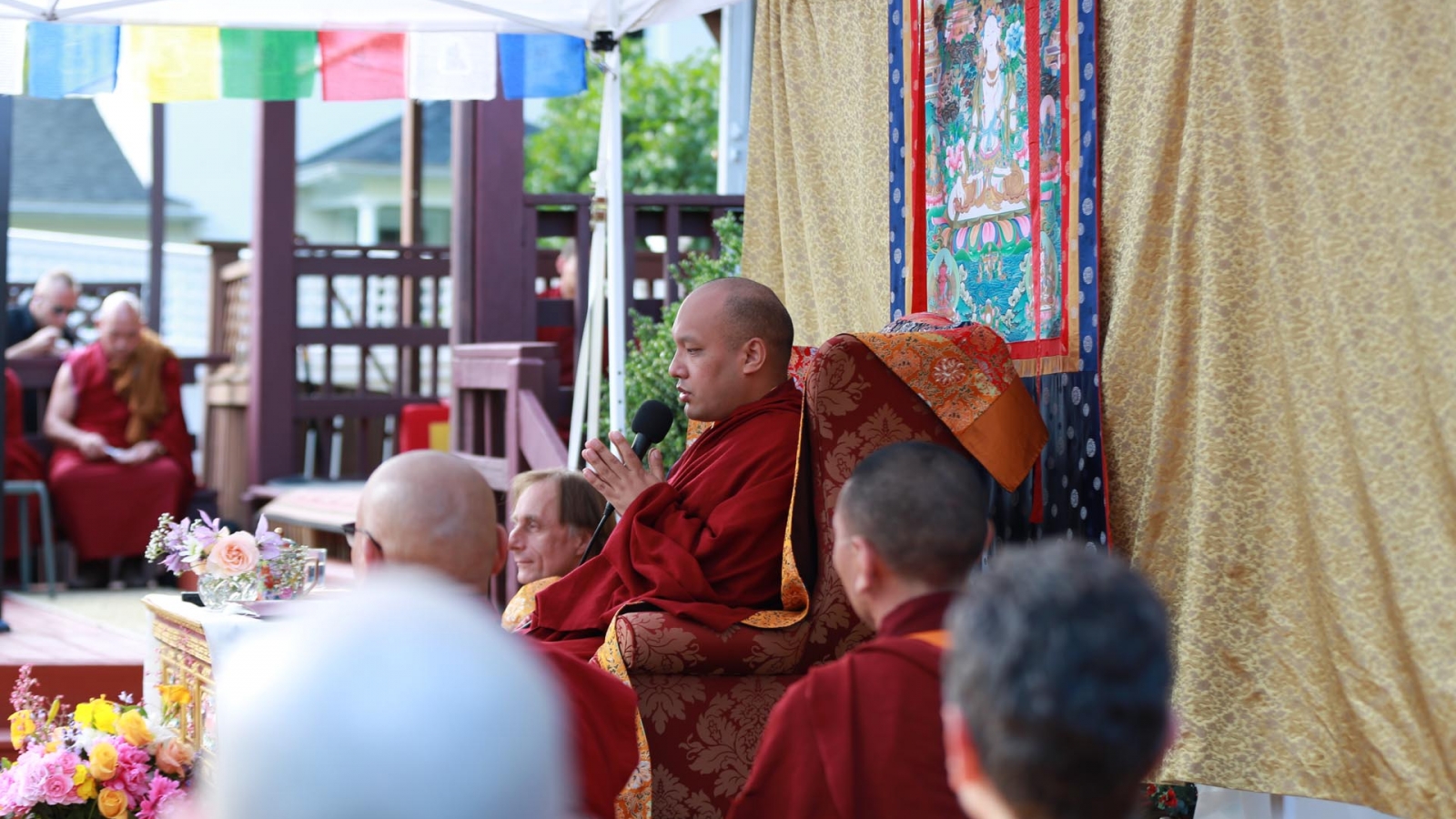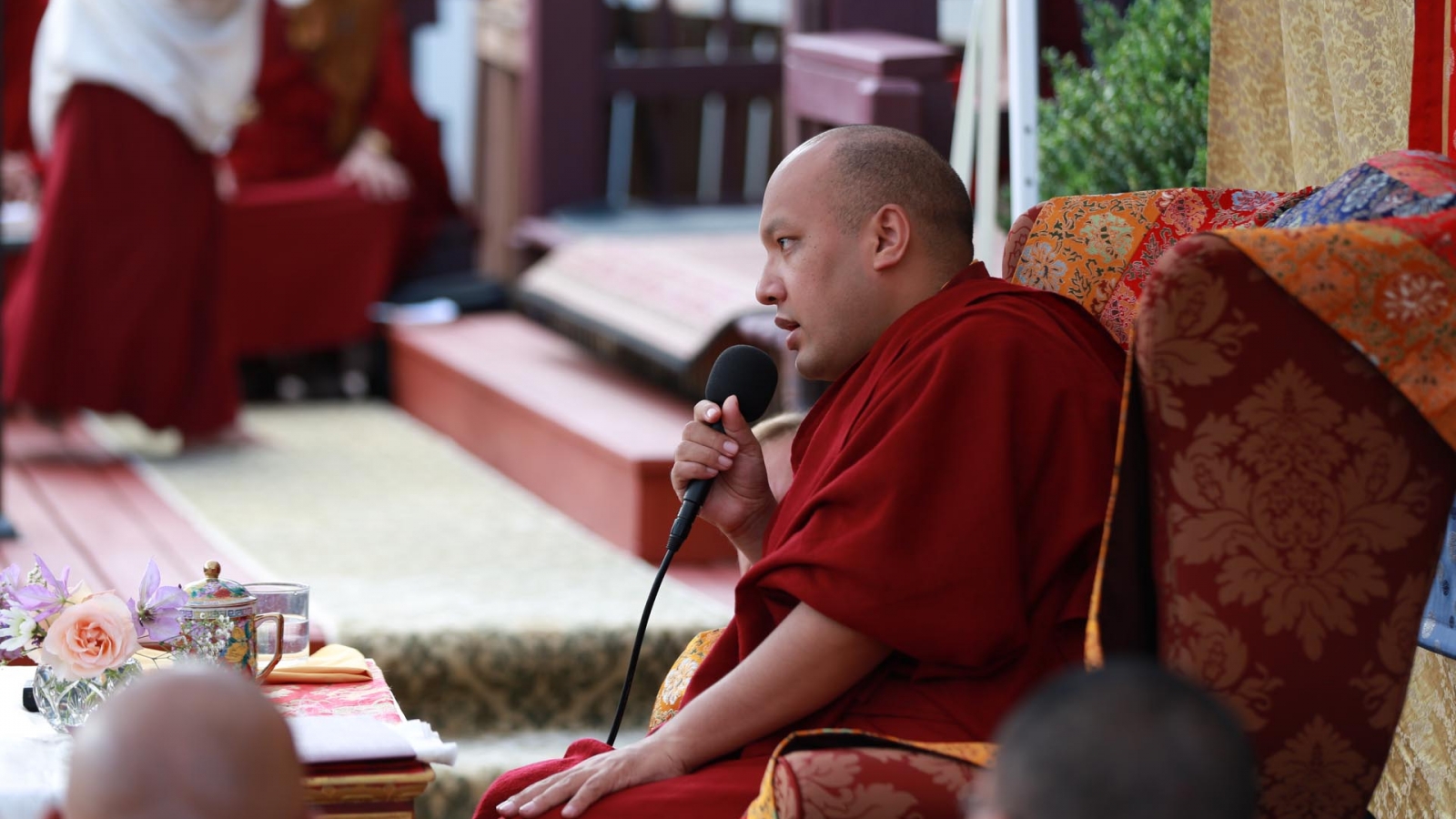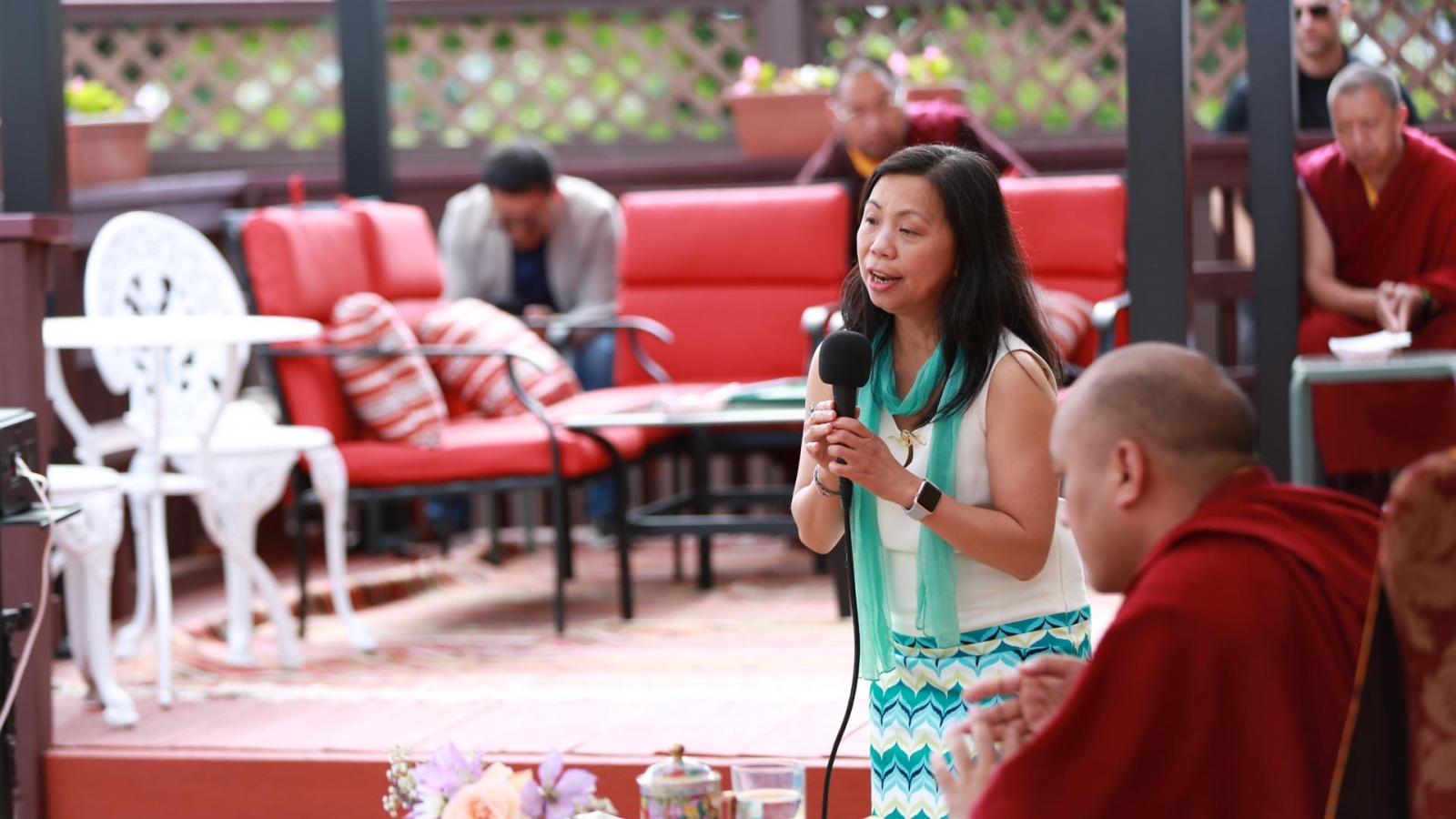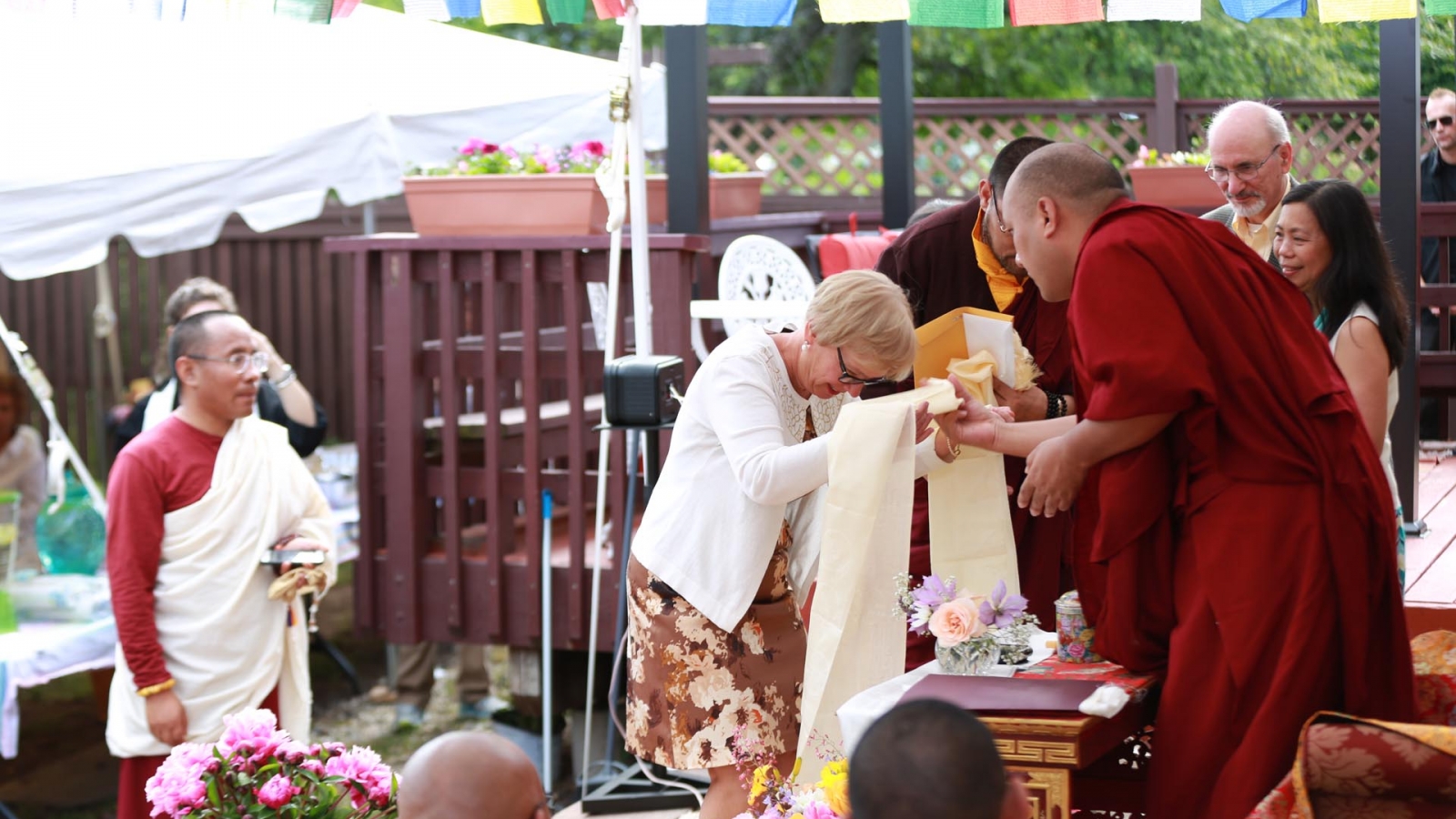Karma Thegsum Choling, Hartford, Connecticut
June 15, 2018
This afternoon His Holiness came to this branch center of Karma Triyana Dharmachakra, his seat in the United States, to celebrate the twentieth anniversary of its founding. The leafy backyard of the center had been transformed. A large white tent now faced the back porch, which held a brocade covered chair for the Karmapa with a beautiful thangka of Chenrezik above it, an altar, and red cushions for the ordained sangha.
After blessing the shrine room and receiving the offerings of body, speech, and mind, the Karmapa appeared, relaxed and smiling on the porch, to greet all the members and friends who had assembled there. Once he had taken his seat, he was welcomed by Malou Dusyn, a co-director of the center. As requested, the Karmapa gave the transmission for the mantra of Chenrezik and then a short talk.
“First,” he began, “I want to thank the staff and members of the center. You have been working now for twenty years and it has not always been easy. You have put a lot of effort into your own practice and into establishing this wonderful center. Everything has gone very well, so I take this opportunity to thank you very much.”
The Karmapa then talked about the importance of putting Dharma into practice. “Practice should be a part of yourselves, and not just spending some time on a cushion. This is not enough. Practice means that when difficult times are happening, you apply experience of meditation to your daily life,” he advised. “At such times, we need a spiritual strength that we can use to face our own emotional situation.” This means, he said, “You should bring your practice into your life everywhere, not just the shrine room. You are ready for anything. Actually, the biggest challenge you face is yourself. Sometimes you can deal easily with other situations, but you have a problem once you need to deal with yourself. Knowing how to work with your mind and how to keep your confidence and faith continuous are key.”
“Practice is not just reciting some kind of ritual or prayer, we do not understand,” he continued. “It relates to an inner strength and to making your life meaningful and guided by wisdom. This means that you have a measure of mindfulness, some space in your mind so that you are no longer overwhelmed by negative emotions. This space allows you to think and watch yourself, becoming aware of what is going right or wrong. This is very important. Otherwise, you might practice well normally, but when a problem comes up, you do not know how to handle it. This means that your practice is not strong enough.
“Some people think that meditation is to make you comfortable, calm, and relaxed, but sometimes it is not like that. Rather, it can resemble intensive exercise. Some things might be painful, and dealing with certain emotional reactions might make you feel uneasy. You need to engage in gradual change, so your confidence and faith will develop. It is not just faith in the teachers; the most important thing is to have faith and confidence in yourselves. Once you have this, you can easily have faith and devotion for the teachers. Otherwise, if you do not have confidence and faith in yourself, it is difficult to have it in your teachers and the Three Jewels.”
After this very helpful advice, the executive director of the Connecticut Council for Interreligious Understanding read words of welcome from nine different world religions. Led by Ken Dusyn, a co-director of the center, an offering was made to the Karmapa and a heart-felt prayer recited for his long life.
The Karmapa then headed to New London, Connecticut and another celebration, sponsored by the Tibetan American Community of Connecticut at the Port N Starboard Banquet & Conference Center. As His Holiness sat on a golden throne in front of an immense painting of the Potala, he was warmly welcomed by officers of the association, who asked him to continue his important work for the benefit of the Dharma and the Tibetan community. Tibetan teenagers in traditional dress sang and danced followed by a sweet group of some thirty small children holding white scarves and singing.
The next section of the program featured Dhondup Wangchen, a filmmaker who was imprisoned in Tibet for making a documentary tat dealt with feelings the Tibetans had about the 2008 Olympics. The filmmaker had only recently been released and reunited with family members living in California. After offering a kata to His Holiness, he spoke of his experience and sang a touching song of praise. The Karmapa came down from his throne to present an award to Dhondup Wangchen for his important work.
The Karmapa’s June Birthday was celebrated with cake for everyone. Following this, he gave the transmission of the Prayer to Manjushri along with his mantra and then addressed the large gathering. The Karmapa began in a lighter vein, apologizing for the fact that talks are unidirectional and that the audience does not have the chance to respond, but can only see and listen. Then he turned to the important topic of the Tibet’s unity, stating that Tibetans do not know what will happen to them in the future, nothing is guaranteed, and for that reason they need to learn how to support each other regardless of where they might come from. The old divisions of Tibet into three areas that see each other as separate polities and cultures must be surmounted, so that Tibetans feel they are one people and one family.
When Tibetans lived in their home country, the Karmapa continued, it was easy for them to be Tibetan, to know the language and the correct ways to conduct themselves with others. However, now that many Tibetans are living abroad, they need to make an extra effort to maintain their language and culture. Parents are responsible for finding methods to teach their children the authentic ways of Tibet. Making efforts is not enough; Tibetans must use their intellect to preserve their tradition while adapting to the countries in which they live. In conclusion, the Karmapa thanked the organizers for inviting him and, rejoicing in the work they have done in the past, encouraged them to continue.
The final celebration of the day was an intimate dinner with key members of the Tibetan American Community, Dhondup Wangchen, and special guests.


